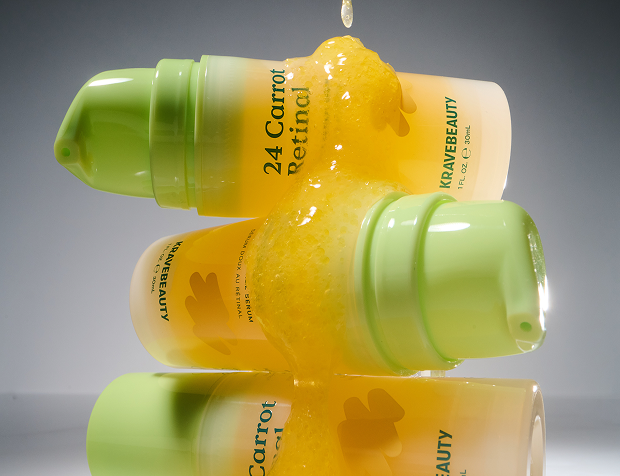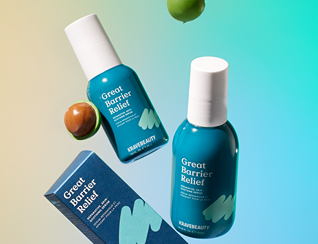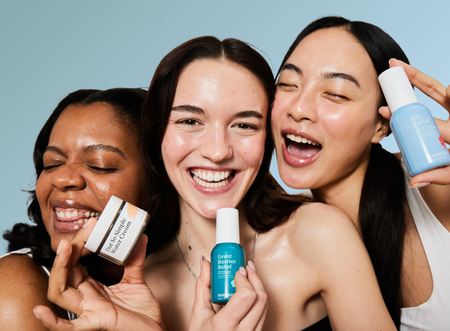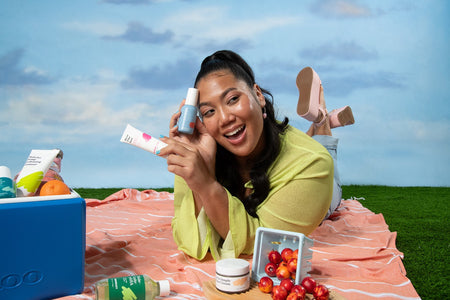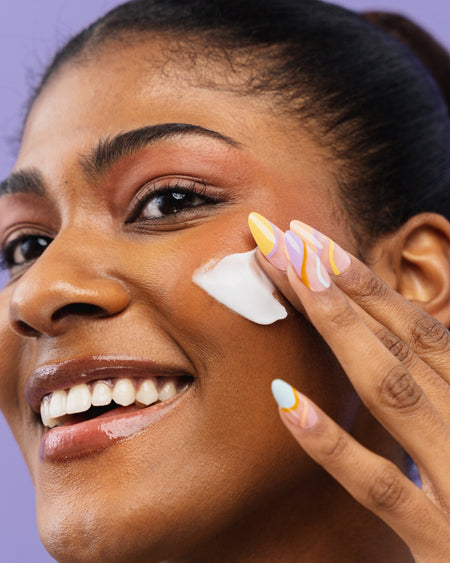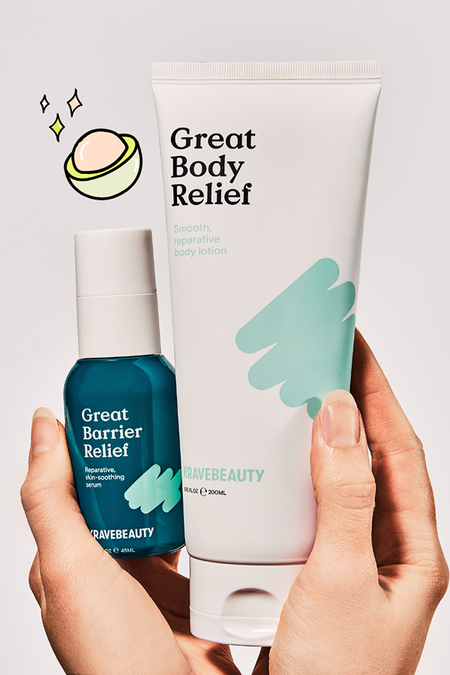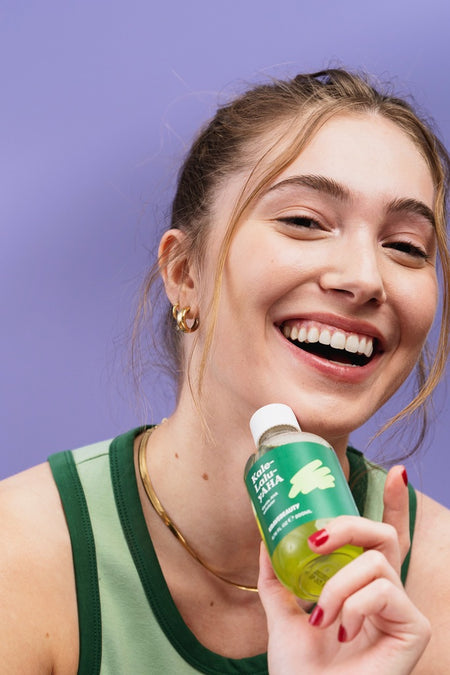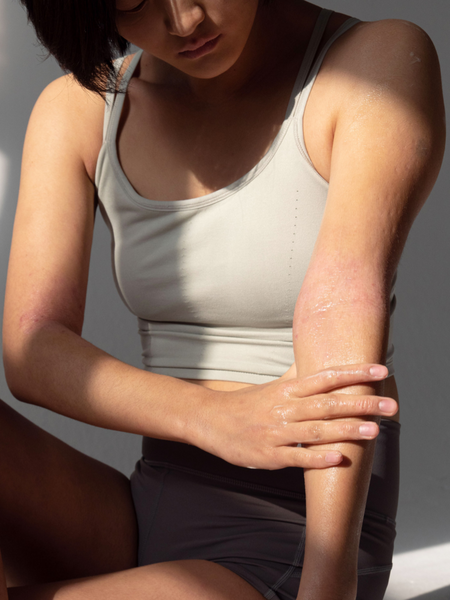Acne Series: PIH, PIE, and Acne Scars

Breakups are never a simple matter, and our relationship with acne is no exception. Just as we have all kinds of emotional scars to sort out in our hearts after saying our farewells, we also have to deal with the physical scars left over after finally giving acne the boot: PIH, PIE, and acne scars.
But also just like any other breakup, you have your emotional support group to help you through this difficult time. That’s where KraveBeauty comes in— to help you deal with the scars left behind by the acne in your life.
In this article, we’ll give you the break down of the different types of acne aftermath we often deal with, how you can treat them, and what you can do to prevent them from showing up in the first place. This is the last hurdle of your acne battle, but we need to put in just as much care and attention to our skin as we did when dealing with our active acne.
Let’s get over this breakup once and for all.
Acne Aftermath
The pain resulting from acne inflammation was one thing, but now we have to deal with the awful aftermath of that inflammation: discoloration and scarring. (When does the suffering end...)
Discoloration:
-
PIH (Post-inflammatory Hyperpigmentation)
You know those dark spots that show up where your acne previously called its home? Meet Post-inflammatory Hyperpigmentation, PIH for short. This annoying bugger is caused by the overproduction and deposition of melanin to the skin in response to inflammation, thus giving it its dark - brown color on your skin.
-
PIE (Post-inflammatory Erythema AKA Redness).
We are all guilty of picking at our pimples (no matter HOW MANY TIMES we were told not to), and then feeling even more guilty when our skin just became even more red and aggravated afterwards. I’m sure you've already met Post-inflammatory Erythema, or PIE, before. This pink - red discoloration on your skin is caused by blood vessel damage within inflamed skin.
How do I tell the difference between PIH and PIE?
In order to begin treating these skin concerns, we first need to differentiate PIH and PIE from each other. From there, we’ll be able to form our plan of action for each distinct type of discoloration. Here’s a test to help you distinguish these two from each other:
“The Pressure Test”
- Put some light pressure on the discolored skin
- Observe the change of color
- If the skin temporarily changes color, then you’re having a case of PIE. This is also called skin blanching, where the pressure from your fingers are constricting the blood vessels and causing the skin’s discoloration to disappear temporarily.
- If the color doesn’t budge, then it’s probably a case of PIH.
Scarring:
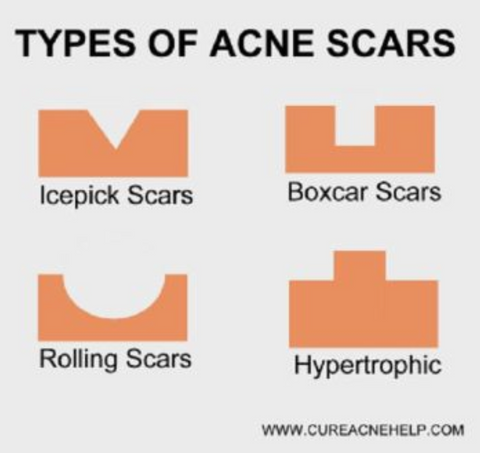
Source: cureacnehelp.com
-
Atrophic Scarring
This type of scarring is where skin appears as if it’s indented or pitted. Atrophic scarring can be divided into more specific types based on their shape and depth (as shown in pictures)
-
Hypertrophic Scarring
This thicker type of scarring occurs when there’s an overgrowth of skin tissue over the surrounding non-inflamed skin. It will often appear as if it’s raised above the rest of your skin.
How to Treat the Acne Aftermath
First thing firsts, please take a moment to understand that this process will take time. Just like with acne, there won’t be any magical product or skincare routine that will get rid of discoloration and scarring overnight. Be patient with your skin, and the results will follow.
Apply sunscreen! Every single day. Period.
Sunscreen is our best friend in many ways, and ESPECIALLY so when it comes to treating and preventing hyperpigmentation. UV radiation affects how pigment appears on our skin, effectively making us more prone to hyperpigmentation and prolonging the healing process even more.
Fading hyperpigmentation already takes so long, so why make things more difficult? Protect yourself from the UV rays by applying your sunscreen, avoiding mid-day sun exposure, and put on that anti-UV gear.
For PIH:
-
Exfoliate regularly
You can use your favorite gentle exfoliating products, like Kale-Lalu-yAHA, to boost your skin’s cell regeneration powers and to remove dead skin cells.
-
Use skincare products that help fade pigmentation.
Skincare ingredients such as Vitamin C, Niacinamide, Hydroquinone are awesome at fading pigmentation. Tamanu oil, which can be found in Great Barrier Relief, can also help fade the look of dark spots for radiant, even skin.
For PIE:
-
Be gentle to your skin
Apply soothing and gentle products to your skin, and avoid harsh physical scrubs to prevent further irritation.
How to Prevent Them

Source: http://www.skinetrate.com/transepidermal-water-loss.html
Maintaining a healthy skin barrier
Your skin barrier is your own personal bodyguard who’s in charge of keeping the good stuff in, and the bad stuff out. When your skin barrier is fed and treated with tender love and care, you can count on it to do its job to keep the bad bacteria out and skin inflammation to a minimum. As a result, your skin’s discoloration and scarring will heal even faster.
Don’t pick your acne
The severity of your post-acne scars is largely dependent on the intensity of your skin inflammation. When you pick your acne, you’re basically creating more chances for bad bacteria to enter your skin and cause more irritation and infection. The more bacteria inhabiting your skin, the deeper and longer your scars will be staying.
